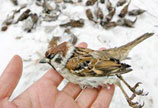Area of lakes expands in Qinghai-Tibet plateau
(Xinhua) Updated: 2014-07-02 15:44LHASA - The area of inland lakes in the Qinghai-Tibet plateau has expanded 26 percent in the past 20 years, according to new research results.
The area of inland lakes in the region, which has an average altitude of 4,500 meters, has expanded to 32,300 square kilometers from 25,600 square kilometers 20 years ago, according to the Institute of Qinghai-Tibet Plateau Research with the Chinese Academy of Sciences.
Before the 1990s, the lake area in the region was shrinking, but began to expand after that, said Zhang Guoqing, an assistant researcher with the institute.
The rapid thawing of glaciers and increased precipitation contributed to the expansion of lakes, Zhang told Xinhua on Wednesday.
Due to global warming, glaciers in the region have shrunk by 15 percent in the past 30 years. Annual runoff from glaciers rose from 61.5 billion cubic meters to 79.5 billion cubic meters during the same period, which replenished the surface water, rivers and lakes, he said.
The Serling Tso Lake, the second largest lake in Tibet with an area of about 2,200 square kilometers, has been expanding by 54 square kilometers and rising by 0.67 meters every year in the past decade, he said.
The tendency to expand will continue in the short term, which will help the cultivation and irrigation of crops as well as rehabilitation of the environment, said Zhang.
But rising lakes have inundated some pastures and caused geological disasters, including floods and landslides.
Zhang called for the authorities to strengthen monitoring of barrier lakes to prevent disasters.
- Fascinating ways Chinese universities charm applicants
- Beijing expects healthy air by 2030
- Bonus-point system for gaokao trimmed back
- 105-year-old railway station in Hebei closes
- Shanghai hospital aims to create healthy workplace
- Executive apologizes for denying invasion
- Mortgage plan to aid seniors
- Chinese teens battling Internet addiction
- Rail travelers brace for summer rush in E China
- Beijing seeks foreign tricycle drivers







